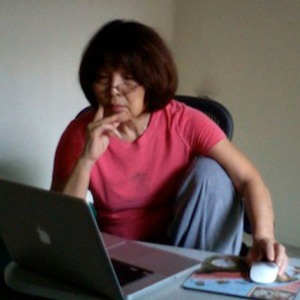Blog
It’s an attitude
I recently posted on Facebook this exchange between my precocious two-and-a-half year old grandson Blake and me.
Conversation with Blake
The other day, he looked at my face and asked, "What's that on your eyes, Popo?"
'That's makeup to make me look pretty," I replied.
"I don't like it. Wipe it off," he said, turning around and leaving the room.
A minute later, he returned with a tissue and handed it to me.
I'm still laughing.
But he raised a good point. One that keeps coming up that I’ve been judiciously avoiding. Not just the issue of wearing makeup -- although it’s a lifetime habit that’s not so easy to break. It’s the issue of aging and all the subterfuges we use to hide the evidence of the inevitable.
I’ll never forget the visceral shock I felt in my gut the first time I noticed a little sag in my previously firm jawline. I must have been in my late 40s. Nowadays when I look in the mirror, I see a stranger looking back at me. When in God’s name did I get so old? I’ll tilt my head to stretch out the saggy, crepey skin hanging from my jaw. And try to look wide-eyed in the vain hope that those wrinkles fanning out from the corners will do a faux botox plump. And those brown spots … well, hell. Just reach for the concealer, primer and foundation cream.
If you care about your wrinkles, I found some tips for you on WebMD (of all places).
· Moisturize. Use a plump up moisturizer with hyaluronic acid, which pulls in water and plumps up the skin.
· Use retinoids to help spur your skin to make more collagen, which combats wrinkles.
· Anti-aging creams. If you must. Look for ingredients like vitamin C and “peptide technology” or “growth factor technology.” I have no clue what those are.
· Hide those spots and wrinkles. After you moisturize, lightly tap on a concealer to hide those dark spots. Then, smooth on a silicone-based primer as a base to soften those wrinkles.
· Foundation. Stay away from heavy matte formulas, as they make your skin look older. Use a hydrating, sheer foundation instead.
If you have any energy and interest after that, you can dive into the eyeliner, eye shadows, brow pencils, blush, and whatever else you have cluttering up your bathroom vanity.
Maybe you prefer the non-makeup look, in which case you can forget all that stuff. Or so I thought. I went online to find out how to achieve that bare look. You can do it, but it’s not as easy as washing your face, patting dry, and running out the door. I counted at least six products in one YouTube tutorial. On top of that, the person doing the demonstration is young, with not a wrinkle in sight.
I find I’m wearing less makeup now, but I still have a skin care regime that I follow out of habit, plus it makes my skin feel good and —OK, you’ve got me – look more youthful. Remember, I’m the one staring at that mirror everyday.
But getting back to Facebook. When I posted that Blake story, I also changed my profile picture to one of Blake and me. Facebook is the ultimate sop to our vanity. Just look at all the photos we post of ourselves doing every little thing in our daily lives. Don’t get me wrong. If it weren’t for Facebook, I would have lost contact with a whole bunch of people (family, friends, colleagues, acquaintances, and even “new” friends). And I must give a shout-out to the Facebook Nation: Some of you are downright funny and interesting and entertaining. You know who you are.
The point I wanted to make about photos is that the camera doesn’t lie. I looked at that photo of Blake and me, and immediately zeroed in on those unforgiving wrinkles and lines around my eyes and on my face and neck. Gaaah! I considered Photoshopping myself smooth, but I decided to suck it up and post it anyway. In case you’re curious, because I was, here it is pre- and post-Photoshop.
Pre-Photoshop — Lines and wrinkles and all

Post-Photoshop — After a lot of clicking on the spot healing brush button … all gone!
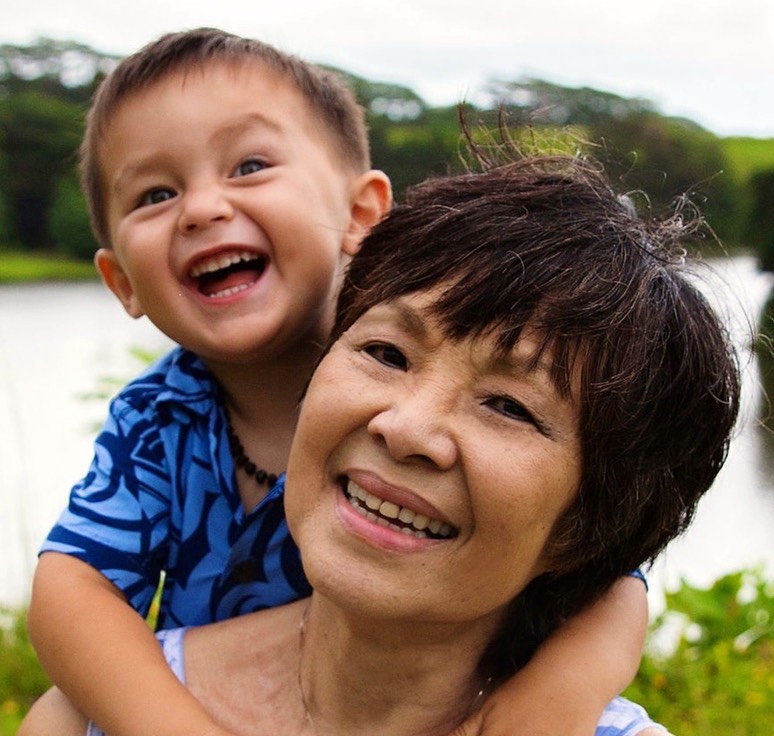
More than vanity and the search for eternal youth, I’ve always said that one of my biggest fears of growing old is becoming invisible and irrelevant. All of a sudden you’re just the grandma who can be seen tagging along, keeping an eye on the grandkids. And you’re the older lady that everybody calls “Auntie.” You and your life are now on the downhill run (or slow walk).
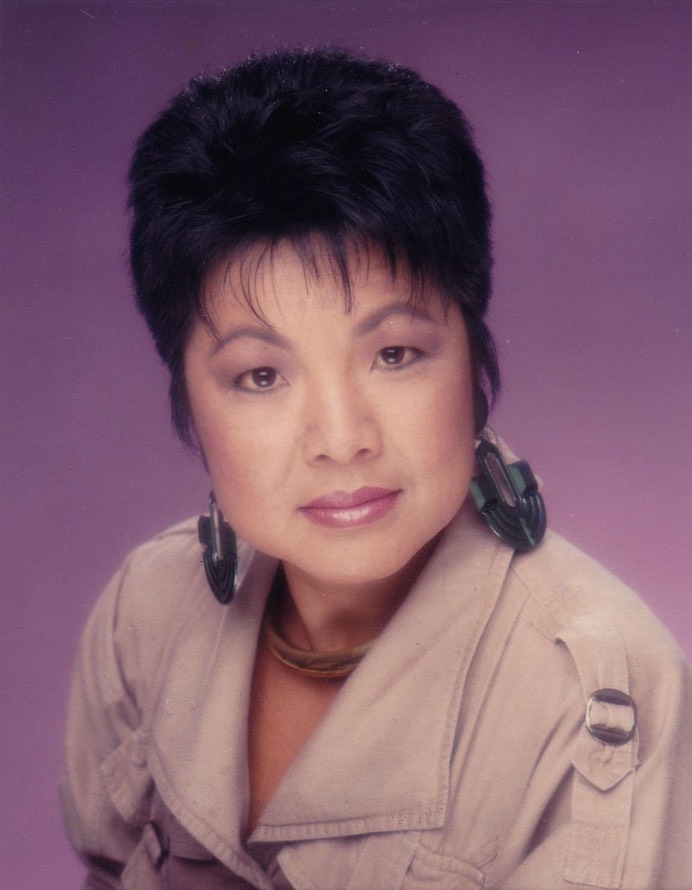
You find yourself going back over old photos to remind you of yourself back in the day when you were a force to reckon with. Just look at this one! It was my hardcore professional power look – including the big earrings.
Luckily for me, I’m pretty healthy and can still work. Because of the technology at my disposal, I work with my clients virtually – mainly via email and file sharing apps like Dropbox and of course, the phone. My clients don’t care what I look like. They just care that I deliver the goods. And so far, the little grey cells are doing just fine. So, it’s time to suck it up and love those lines and wrinkles. I came by them honestly.
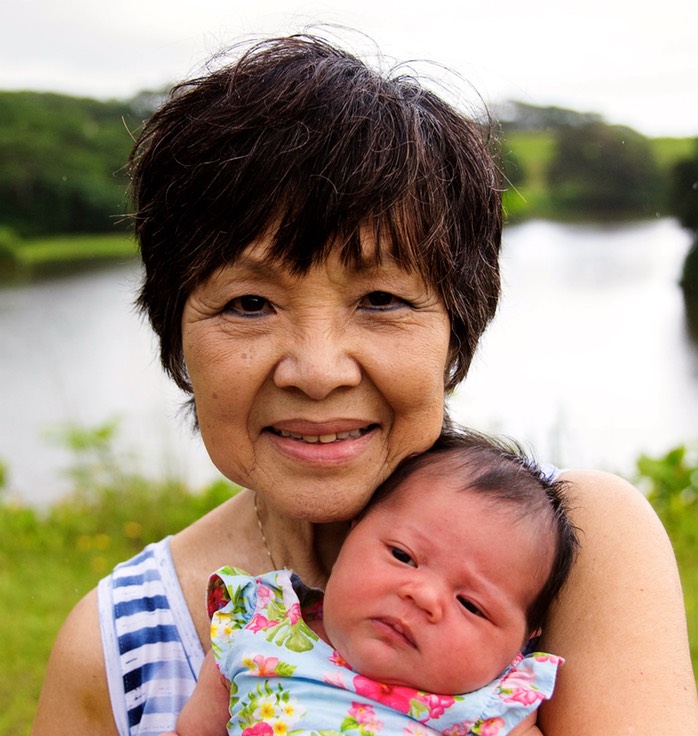
Hand me that tissue, Blake.
Aging gracefully
Is not an oxymoron.
It’s an attitude.
Eleven percent what???
I always figured I wasn’t pure Chinese (some family members have fair skin, light brown eyes, dark brown hair, and freckles). We guessed that someone went off the reservation on my mother’s side of the family tree (she was born and raised in British Guiana, maiden name Moosie – probably the anglicized version of Moo See). One guess was the DNA donor was East Indian. Another that he/she was Mayan. Boy, was I in for a surprise.
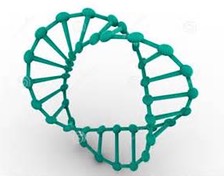
Backstory: My niece, Lilimarie, had her DNA tested by AncestryDNA and shared her results with me. No way, I said. So I sent in my little tube of saliva for confirmation. Sure enough, it matched – although the percentages were a bit different. This was also true for another niece, Lisa, who had hers tested independently. Both nieces were identified as close family.
Here’s what my DNA said. Predictably, I’m 89 percent Asian (Asia East, as they define it). The remaining 11 percent – are you ready for this? – is Polynesian. Polynesian???
There’s a certain irony in this, as I live in Hawaii, where the native people are Polynesians. Could it be that this hidden affinity is the reason why I’ve never been able to leave the islands no matter how many times I tried or considered it? Think about it. I’ve been here for 53 years now, which is a little over two-thirds of my life.
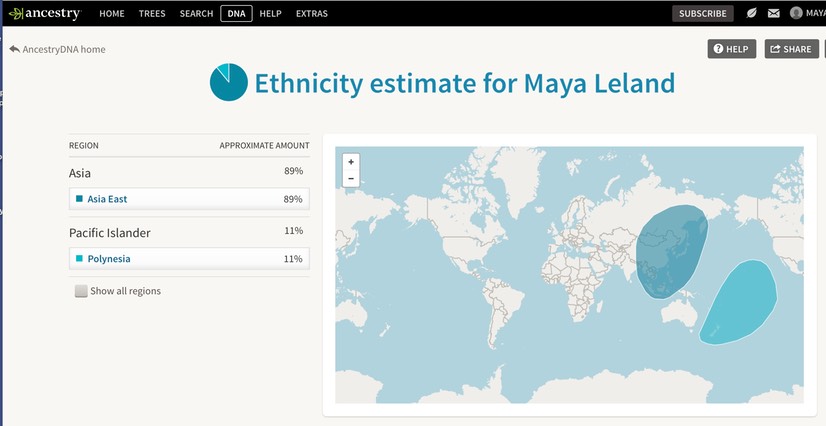
That’s all very romantic, but what’s the real story? Here’s what I learned from AncestryDNA. It says that some scholars believe Neolithic Austronesians are the most likely ancestors of the Polynesians, and that they originated on the island of Formosa (Taiwan). There’s another theory that Polynesia’s Austronesian roots are deeper in Southeast Asia. But one thing’s for sure – those Austronesians got around, as they were very accomplished sailors who settled on islands in the South Pacific and eventually, Hawaii.
Back up a moment though. Taiwan? That’s getting a little closer to an explanation. Apparently there’s archaeological evidence to supports a “northern origin” for the Austronesian language family in mainland southern China and Taiwan. One theory says that Austronesians migrated from southern China to Taiwan as late as 4000 BC. Southern China, by the way, includes the Guangdong Province, which is one of the main Hakka-speaking provinces in the south.
Now Hakka people, my ancestors, are great travelers. Hakka means “guest families” as they have no geographical roots. They’re said to have originated from the Yellow River area, and in a series of migrations, settled in Southern China. From here they migrated overseas to various countries throughout the world. Wikipedia says the Hakka are the most diasporic of the Chinese community groups, with a worldwide population of about 80 million people. We’re everywhere!
Getting closer to home, the Hakka migrated to the Caribbean in the mid-1800s as contract laborers. My home island Jamaica was one of those destinations, with nearly 5,000 Hakka arriving there between 1845 to 1884. Now here’s the little clue that I thought might explain my Polynesian ancestry. Hakka also migrated to British Guiana starting in 1853. But there weren’t enough Hakka women for the men, which “posed a problem.” There you go. Except, if my ancestor sought comfort elsewhere, was it with a Polynesian? And how the heck did she get there? National Geographic has some possible answers including “hard, empirical evidence (Polynesian chicken bones found in Chile) that these contacts (Polynesians made it to South America) actually took place.” Eureka!
I’m also guessing that my Hakka roots are tied to the pre-Austronesian migrations from Southern China into Taiwan and Southeast Asia, which accounts for my 89 percent Asian DNA.
That’s my theory, anyway. But I’m putting it out there to my family on the John Moosie/Mary Wong side. If you’re the least bit curious and can come up with a better explanation for my 11 percent mystery, be my guest. You might even want to check out your DNA.
Such a mystery.
All because of a vial
Of my saliva.
